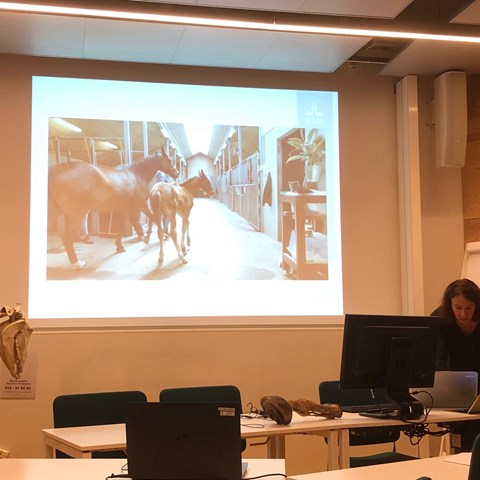Lameness in animals is the most obvious sign of orthopaedic pain that animals cannot verbalise. Asymmetries of vertical movement, laterality, of different body components is useful measurement of lameness. The question is, is such an asymmetric movement pattern always caused by or can it sometimes be due a natural congenital laterality?
Motor laterality, such as left or right handedness, is a well-known phenomenon in both humans and animals. Concurrently, orthopaedic disease is a common and big animal welfare issue. Lameness in animals is the most obvious sign of orthopaedic pain that animals cannot verbalise. A subjective evaluation of lameness is unreliable, however. We have therefore developed objective lameness methods. In an objective lameness study of healthy riding school horses, we discovered that 73 % of them had altered gait patterns. The question is: was this due to pain or a mechanical abnormality? To answer this question, we have followed young horses and possible gait alterations over time. Upon recruitment of the first 50 young horses, we discovered that 73 % of them had motion asymmetries not related to training. As young horses may suffer from developmental joint disorders, we cannot determine whether the asymmetries are pain related or a matter of biological variation. We are therefore still missing an important piece of the puzzle: the first two years of a horse.
Therefore, we wish to study the relation between motion asymmetries, motor laterality and lameness starting with foals. By doing so we hope to learn more about whether an altered gait pattern is always connected to pain – and thus an animal welfare issue – or whether an animal can be born with a pain free congenital laterality.
